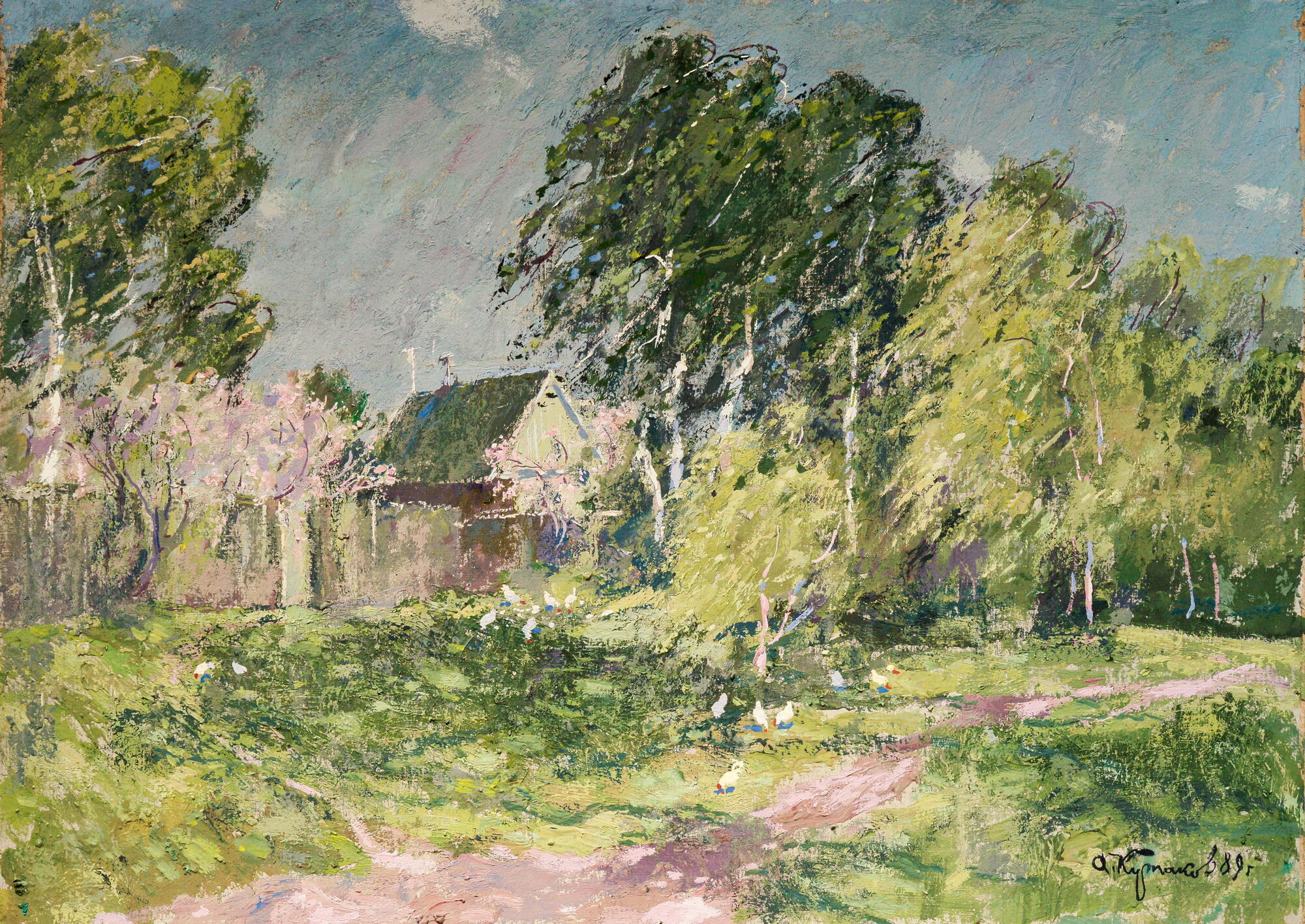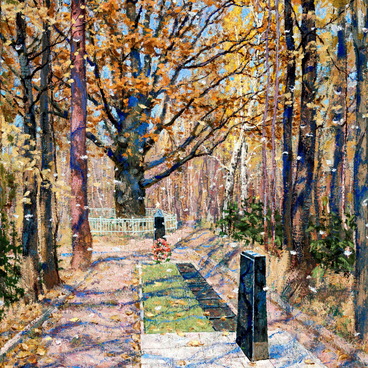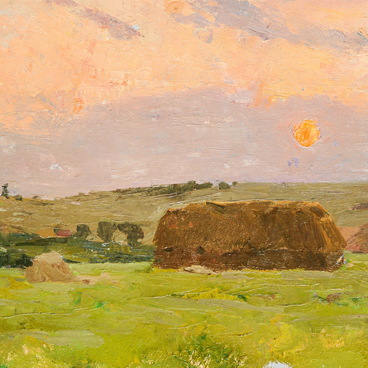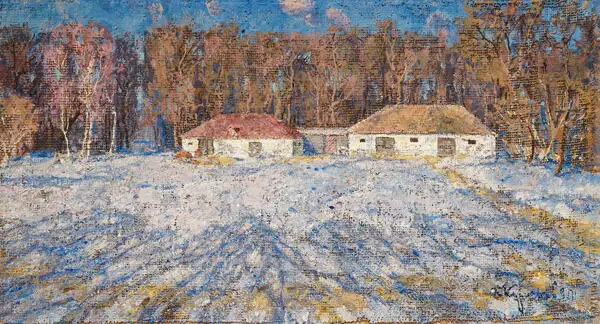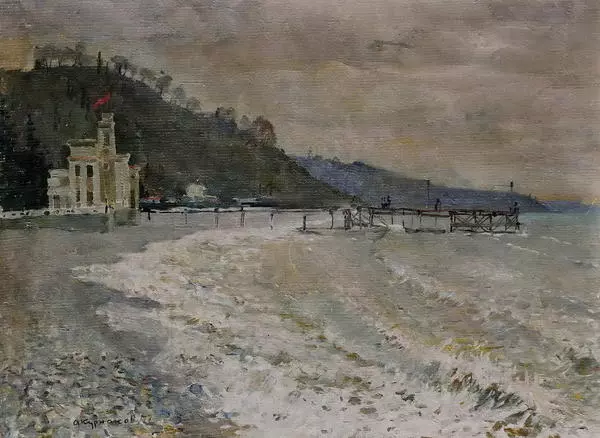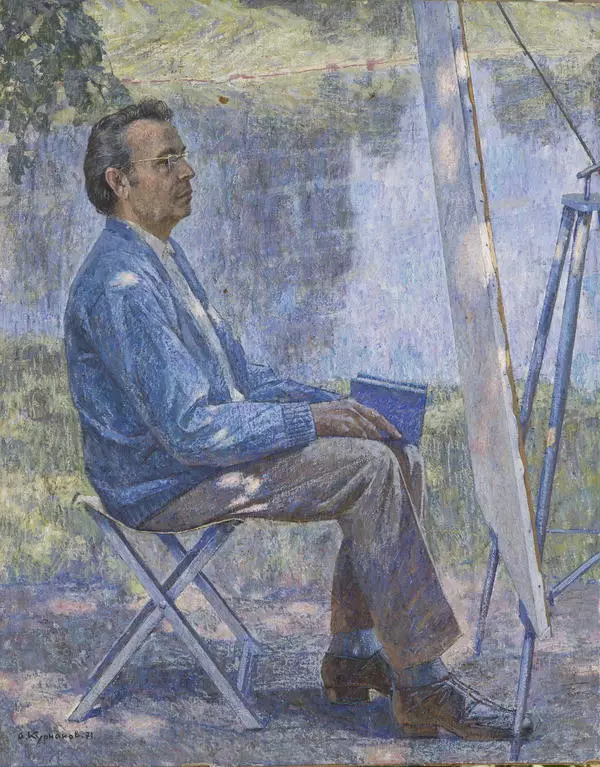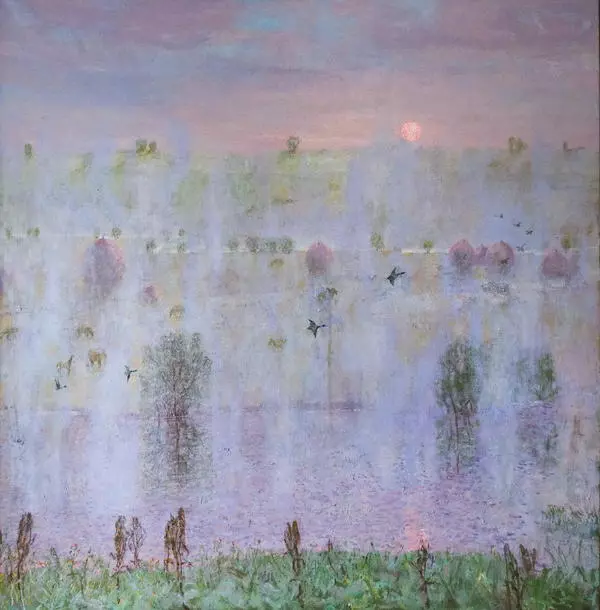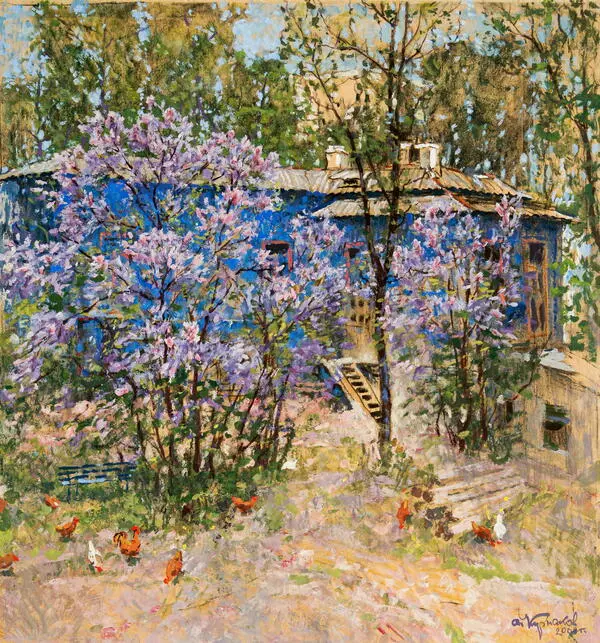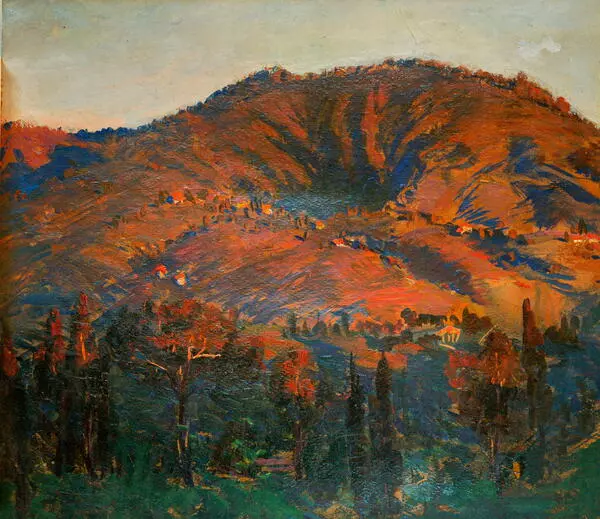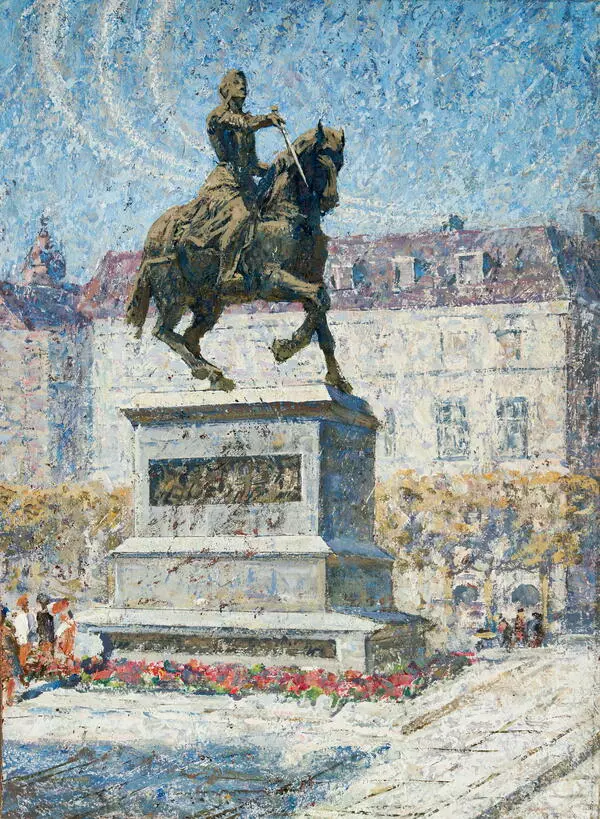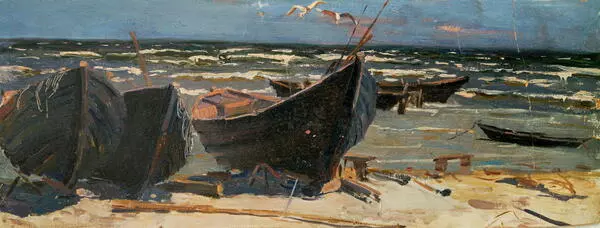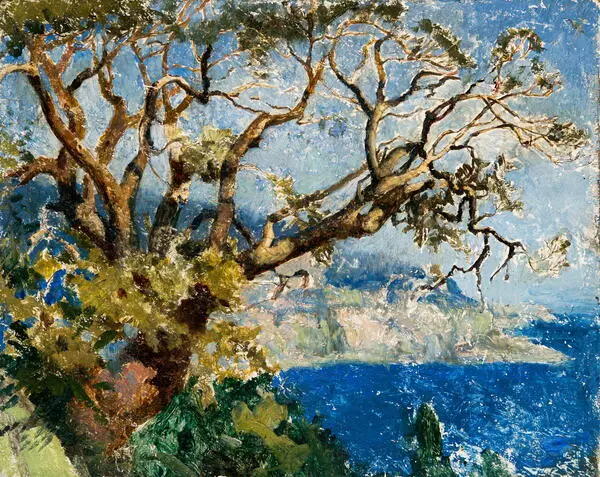The common lilac is considered one of the symbols of the approaching summer. Especially in Russia where this plant was used to adorn old landowners’ estates and houses and grew in numerous parks and gardens. Lilac bushes were an integral part of Russian landscapes, including urban ones.
The lilac comes from Asia. It was brought to Europe in the early 16th century. This ornamental plant gained massive popularity in Russia after the Great Patriotic War. Lilacs were especially useful in the cities lying in ruins after the war. The unfastidious and easily grown shrubs were actively planted to disguise devastation and beautify streets and parks.
Andrey Ilyich Kurnakov was also enthralled by lilacs enough to depict them in this traditional rural view. He paints several picturesque blossoming bushes, which do not go higher than the roof. Lilacs help the painter to set the atmosphere of freshness, spring, and May.
Kurnakov focuses on a small village, entirely surrounding it with lush greenery and dizzying fragrances. The key element of the composition is the house illuminated by the spring sun. The light falls on trees and emerald grass with pale pink and snow-white petals scattered all over it. The sunshine contrasts with the shades on the country road. The contrast of light and shadow creates a truly picturesque scene.
The birches bend their thin branches under sudden gusts of strong wind. The chickens scatter in all directions in alarm. The whirlwind disturbs the peace of the scene, chasing away the sunny weather with its sharp gusts. The approaching storm cloud adds to the rising tension. The rain is seen coming from the right side. The entire space seems filled with fresh air and dampness.
Kurnakov finds beauty in an everyday and seemingly ordinary landscape. The painting is imbued with movement, and the details outlined with free strokes help render the changes in nature.
The picture is performed in light tempera paints. The artist chooses cold colors of greenish, blue and lilac that perfectly convey the feeling of freshness, youth, and inspiration.
The lilac comes from Asia. It was brought to Europe in the early 16th century. This ornamental plant gained massive popularity in Russia after the Great Patriotic War. Lilacs were especially useful in the cities lying in ruins after the war. The unfastidious and easily grown shrubs were actively planted to disguise devastation and beautify streets and parks.
Andrey Ilyich Kurnakov was also enthralled by lilacs enough to depict them in this traditional rural view. He paints several picturesque blossoming bushes, which do not go higher than the roof. Lilacs help the painter to set the atmosphere of freshness, spring, and May.
Kurnakov focuses on a small village, entirely surrounding it with lush greenery and dizzying fragrances. The key element of the composition is the house illuminated by the spring sun. The light falls on trees and emerald grass with pale pink and snow-white petals scattered all over it. The sunshine contrasts with the shades on the country road. The contrast of light and shadow creates a truly picturesque scene.
The birches bend their thin branches under sudden gusts of strong wind. The chickens scatter in all directions in alarm. The whirlwind disturbs the peace of the scene, chasing away the sunny weather with its sharp gusts. The approaching storm cloud adds to the rising tension. The rain is seen coming from the right side. The entire space seems filled with fresh air and dampness.
Kurnakov finds beauty in an everyday and seemingly ordinary landscape. The painting is imbued with movement, and the details outlined with free strokes help render the changes in nature.
The picture is performed in light tempera paints. The artist chooses cold colors of greenish, blue and lilac that perfectly convey the feeling of freshness, youth, and inspiration.
